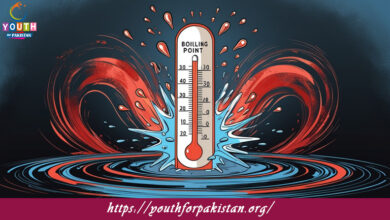Work MDCAT MCQs with Answers

Welcome to the Work MDCAT MCQs with Answers. In this post, we have shared Work Multiple Choice Questions and Answers for PMC MDCAT 2024. Each question in MDCAT Physics offers a chance to enhance your knowledge regarding Work MCQs in this MDCAT Online Test.
Work MDCAT MCQs Test Preparations
Work is defined as:
a) The product of force and distance in the direction of the force
b) The product of mass and velocity
c) The rate of change of momentum
d) The difference between kinetic and potential energy
The SI unit of work is:
a) Joule
b) Newton
c) Watt
d) Meter
If the force applied is perpendicular to the direction of motion, the work done is:
a) Zero
b) Equal to the force multiplied by displacement
c) Equal to the displacement divided by force
d) Equal to the force times displacement squared
When the direction of force and displacement is the same, work done is:
a) Positive
b) Negative
c) Zero
d) Infinite
The work done by a force of 10 N moving an object 5 meters in the direction of the force is:
a) 50 Joules
b) 5 Joules
c) 10 Joules
d) 15 Joules
Work done is considered negative when:
a) The force and displacement are in opposite directions
b) The force is perpendicular to the direction of displacement
c) The force is zero
d) The displacement is zero
The work done on an object when it moves in a direction perpendicular to the force is:
a) Zero
b) Maximum
c) Equal to the force times displacement
d) Equal to the potential energy of the object
The work done by a variable force can be calculated using:
a) The area under the force vs. displacement graph
b) The average force times the total displacement
c) The maximum force times the total displacement
d) The total displacement divided by the force
The work-energy theorem states that the work done on an object is equal to:
a) The change in its kinetic energy
b) The change in its potential energy
c) The force applied multiplied by distance
d) The total energy of the object
The work done to lift an object to a height is equal to:
a) The object’s weight multiplied by the height
b) The object’s mass multiplied by acceleration
c) The object’s weight multiplied by the distance
d) The object’s mass multiplied by the velocity
If the displacement of an object is zero, the work done on the object is:
a) Zero
b) Equal to the force applied
c) Equal to the object’s weight
d) Equal to the potential energy
The work done by friction is always:
a) Negative
b) Positive
c) Zero
d) Equal to the applied force
The work done on an object is equal to:
a) The change in its mechanical energy
b) The change in its potential energy only
c) The change in its kinetic energy only
d) The total energy of the object
The power output of a machine is defined as:
a) The rate at which work is done
b) The total amount of work done
c) The amount of energy used
d) The force applied divided by time
The unit of power is:
a) Watt
b) Joule
c) Newton
d) Meter
The energy stored in a compressed or stretched spring is known as:
a) Elastic potential energy
b) Kinetic energy
c) Gravitational potential energy
d) Thermal energy
The work done to move an object against gravity is:
a) Equal to the change in gravitational potential energy
b) Equal to the object’s weight
c) Equal to the object’s kinetic energy
d) Equal to the distance moved horizontally
The work done by a person lifting a box at a constant speed is:
a) Equal to the box’s weight times the height lifted
b) Equal to the box’s mass times the speed
c) Equal to the box’s weight divided by the height
d) Zero
The work done on an object is the same as:
a) The change in its energy
b) The force applied times the distance
c) The force applied divided by the time
d) The distance divided by the time
If the force applied is variable, the work done is found by:
a) Integrating the force with respect to displacement
b) Multiplying the average force by the displacement
c) Using the maximum force times the displacement
d) Adding the force values over time
The work done to move an object horizontally with no vertical displacement is:
a) Zero if there is no horizontal force
b) Equal to the object’s weight
c) Equal to the object’s kinetic energy
d) Equal to the object’s potential energy
In an ideal machine, the work input is equal to:
a) The work output
b) The power output
c) The total energy used
d) The energy loss
The work done to compress a gas in a cylinder is:
a) Equal to the pressure multiplied by the change in volume
b) Equal to the volume divided by the pressure
c) Equal to the pressure times the temperature
d) Equal to the change in temperature times the volume
The work done by a machine to lift a load is:
a) The product of the load’s weight and the height lifted
b) The load’s weight divided by the height
c) The load’s weight times the velocity
d) Zero
The work done on an object is positive if:
a) The force and displacement are in the same direction
b) The force and displacement are in opposite directions
c) The force is perpendicular to the displacement
d) The object does not move
When a car accelerates, the work done on it is converted into:
a) Kinetic energy
b) Gravitational potential energy
c) Elastic potential energy
d) Thermal energy
The work done in moving a charged particle through an electric field is equal to:
a) The change in electric potential energy
b) The change in kinetic energy
c) The force times the distance
d) The electric field strength times the charge
The work done on an object when it is lifted at constant speed is:
a) Equal to the gravitational potential energy gained
b) Equal to the object’s kinetic energy
c) Equal to the work done by friction
d) Zero
The work done by the force of gravity is:
a) The product of the gravitational force and vertical displacement
b) The product of the gravitational force and horizontal displacement
c) The change in kinetic energy
d) The change in potential energy
If the displacement of an object is doubled while the force remains constant, the work done will be:
a) Doubled
b) Tripled
c) Quadrupled
d) Remain the same
When a car is moving with constant speed on a level road, the work done by the engine is:
a) Equal to the work done against friction
b) Zero
c) Equal to the car’s kinetic energy
d) Equal to the change in the car’s potential energy
The work done to overcome air resistance is converted into:
a) Thermal energy
b) Kinetic energy
c) Potential energy
d) Elastic potential energy
The work done in rotating an object about an axis is:
a) The product of torque and angular displacement
b) The product of force and linear displacement
c) The change in the object’s rotational inertia
d) The change in the object’s linear velocity
The work done to bring an object to a stop from a given speed is equal to:
a) The object’s kinetic energy
b) The object’s potential energy
c) The object’s thermal energy
d) The object’s weight
In an adiabatic process, the work done on a gas is:
a) Equal to the change in internal energy
b) Equal to the heat added to the gas
c) Zero
d) Equal to the change in pressure times volume
If you are interested to enhance your knowledge regarding Physics, Chemistry, Computer, and Biology please click on the link of each category, you will be redirected to dedicated website for each category.





